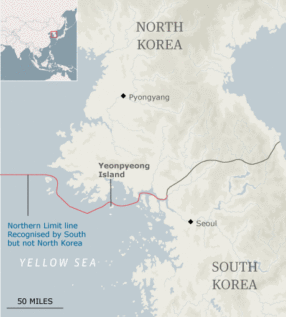
According to a 2014 BBC World Service poll, just 3 percent of South Koreans view North Korea in a positive light, with 91 percent expressing a negative view. This statistic is indicative of the tensions between the two countries which have varied since the end of the Second World War in 1945.
At the end of the war, the country was divided on the thirty eighth Parallel into the Republic of Korea in the south, backed by the United States and Western Europe, and the Democratic People’s Republic of Korea in the north, backed by the Soviet Union and Communist China. The North’s new leader, Kim Il-sung launched the Korean War in 1950 in an attempt to reunify the country under communist rule. After three years of devastating war between the two countries, a ceasefire was brokered in 1953. However, the two states still remain officially at war because a peace treaty was never signed. The ceasefire established the Korean Demilitarised Zone (DMZ) which remains in place today.
Both countries remained under military rule following the Korean war, but South Korea has since prospered and, in terms of development, is now in line with the United States, Japan and Western Europe. The North has remained under communist rule by the Kim family. Following the Korean War, the North has relied heavily on foreign aid, most of which came from the Soviet Union until the end of the Cold War in 1991. Levels of foreign aid have since dropped dramatically and the economic situation remains precarious.
Tensions rose again in the late 1960s with a series of low-level armed clashes known as the Korean DMZ conflict, including covert raids on the North, a commando attack on the South Korean presidential Blue House and the hijacking of a South Korean airliner in December 1969. Following these clashes, a series of secret talks began in 1972 between the two countries. These talks led to the North-South Joint Statement in July 1972 in which the terms of reunification talks were set out by the two countries.
However, the unruly nature of the North and the strong response by the South has resulted in a series of strains between the countries over the past forty years. Talks broke down in 1973 after the kidnapping of the South Korean opposition leader Kim Dae-jung by the North Korean intelligence agency. The rollercoaster of tensions continued throughout the 1970s and reunification looked like a strong possibility several times.
In the late 1980s, a global thawing of the Cold War and the election of a new, more liberal president in South Korea led to an initiative called Nordpolitik which proposed the interim development of a Korean Community; again, reunification looked like a distinct and imminent possibility.
But North Korea’s nuclear ambitions got in the way and the end of the Cold War brought economic crisis to the north. Defectors began to flee southwards in large numbers. In 1995, it was estimated that 561 defectors from the North were living in South Korea. By 2007, the estimation had risen to more than 10,000.
In light of the North’s economic troubles, Kim Dae-jung announced a ‘Sunshine’ policy toward the North which primarily meant a softening of attitude. The Sunshine Policy led to dramatically increased relations between the two countries, both diplomatically and economically.
The Sunshine Policy was formally abandoned in 2010 after a South Korean ship was allegedly attacked by a torpedo from the North; an accusation which North Korea rejected. President Lee Myung-bak declared that Seoul would cut off all trade with North Korea as part of measures primarily aimed at striking back diplomatically and financially. North Korea denied all such allegations and responded by severing ties between the countries and announced it abrogated the previous non-aggression agreement. Over the next few years, brief and low-level fighting occurred over the DMZ at various times and a war of words was fought between the two countries.
North Korea’s recent testing of nuclear missiles has alarmed both the South and the international community, leading to relations being at their worst since the 1990s. This is due in part to the rule of Kim Jong-un who has escalated tensions since he came to power in 2011 and continues to test missiles in the region and stage large military demonstrations. Since President Trump was elected, America’s attitude towards the North Koreans has hardened, despite a visit by Secretary of State Rex Tillerson to the DMZ.
